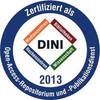PDF, English
- main document
 Restricted access: Repository staff only until 12 August 2026. Restricted access: Repository staff only until 12 August 2026.
Login+Download (26MB) | Terms of use |
Abstract
The fungal tRNA ligase Trl1 plays an essential role in non-conventional tRNA splicing as well as the unfolded protein response. Trl1 is often discussed as potential target for antifungal therapy due to its absence in humans. The ligation mechanism of the tripartite enzyme can be divided into two stages: a first RNA end-modification reaction mediated by its C-terminal cyclic phosphodiesterase domain (CPD) and its central polynucleotide kinase domain (KIN), and a second adenylyltransferase reaction carried out by its N-terminal adenylyltransferase domain (LIG). The Trl1-LIG domain is of particular interest as a drug target due to its unique features in performing the final ligation reaction. Molecules binding to the Trl1-LIG active site could block ATP binding, interfere with RNA-binding residues or disrupt the coordination of the essential 2ʹ-P during the ligation reaction. Additionally, the structure of the unique folded C-terminal domain (CTD) could be targeted. This study deepens the molecular understanding of the unique features of Trl1-LIG, starting with an analysis of the RNA substrate properties required for efficient ligation. It further dissects the Trl1-LIG mediated ligation mechanism and provides biochemical assays to monitor each step of the reaction. A high-resolution crystal structure provides insights into the coordination of RNA substrates, revealing the activation principle within the active site of Trl1-LIG. Complementary biochemical analyses examine the role of the unique CTD and identify the determinants of the 2ʹ-P end specificity. Additionally, a model for the binding of physiological tRNA substrates is proposed. This study also provides insights into the interdomain assembly and the interface of both LIG and KIN domains, complementing the collection of Trl1 structural snapshots. Here, a model for the RNA transfer of the 5ʹ end from the KIN domain, after its modification, to the LIG domain for its activation is proposed. These structural insights helped to explore the physiological role of mutations in Trl1-LIG that alter the UPR and present a potential protein binding site on the outer surface of Trl1-LIG’s CTD. Ultimately, to identify potential target sites within Trl1-LIG, three different strategies were employed: (1) Structure-based in silico screening, (2) High-throughput crystallization fragment screening and (3) Ligation-based high-throughput screening assay.
| Document type: | Dissertation |
|---|---|
| Supervisor: | Peschek, Dr. Jirka |
| Place of Publication: | Heidelberg |
| Date of thesis defense: | 25 July 2025 |
| Date Deposited: | 18 Aug 2025 07:42 |
| Date: | 2026 |
| Faculties / Institutes: | The Faculty of Bio Sciences > Dean's Office of the Faculty of Bio Sciences |
| DDC-classification: | 570 Life sciences |
| Controlled Keywords: | Proteine, Enzym, Kristallografie, Biochemie |









